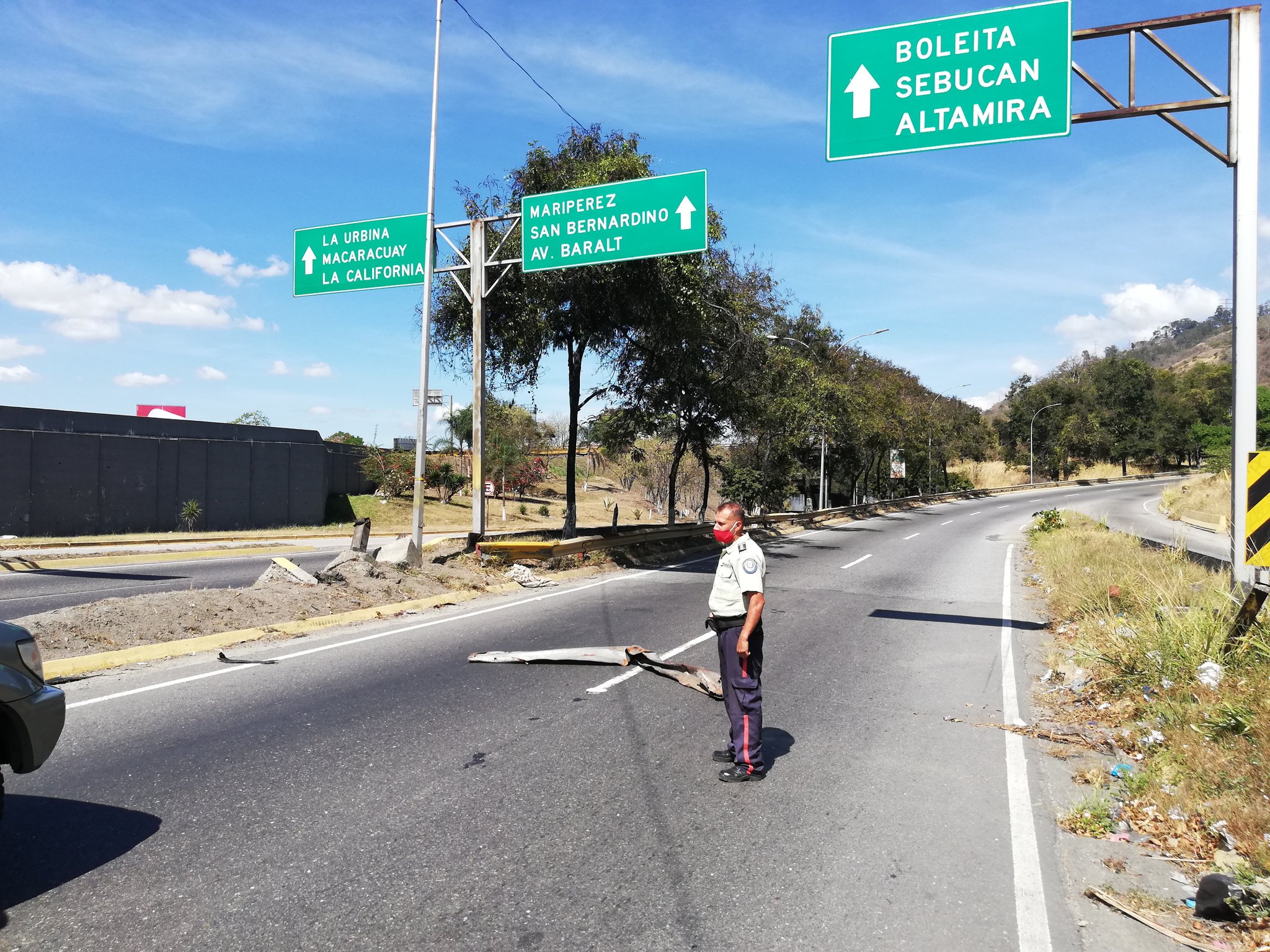Chavismo Barricades Venezuela
In 2014, Nicolás Maduro complained about civilians barricading the streets with debris. Six years later and that's what his government does, to block transit and lower the spread of COVID-19


Photo: Twitter
Venezuela came in a little late to the COVID-19 pandemic, but its curve is on the rise and with no sign of slowing down; on July 21st, the number of contagions totalled 12,774, with 1,952 in the Capital District alone. This rise in Caracas, and the limited medical supplies available, have sped up the drastic measures imposed by the government of Nicolás Maduro since March, when the first two cases were confirmed. His last resort has been the barricades, just like the ones protesters used to put up in 2014 and in 2017.
On March 16th, Maduro announced a general quarantine and forced everyone to use a facemask when going out; he also mentioned that those found to be partying would be detained, as it happened to 18 people on March 30th for throwing a party in Los Palos Grandes, Chacao municipality. Three of them were charged with drug trafficking, carrying a gun without a permit, resisting authority, and aiding and abetting.
The quarantine measures continued. On June 8th, the 7×7 “conscious, radical, voluntary, family and community” quarantine scheme began, known as “radical quarantine.” It prevents people from leaving their parishes and going through checkpoints with an authorization that certifies them as members of priority sectors: public transport, freight, food industry, health care, media, patrol cars, and ambulances.
However, the spread of COVID-19 in Caracas has spiked instead of slowing down, a reality that has led army and police agents to recreate the protests from 2014 and 2017, when civilians would take out old tires, beds, buckets filled with stones, debris, and concrete rubble to set up blockades so that the military, police, and armed groups wouldn’t enter these residential areas and throw tear gas at them.
Today, it’s the security forces putting up these barricades. Up until June 21st, the National Guard and the National Police had blocked four areas of the Libertador municipality: Ruiz Pineda, Las Adjuntas, El Paraíso and El Valle. According to agents, the order is to lower transit, whatever it takes.

What they used to decry, is now embraced: chavismo-sponsored blockades.
Photo: Twitter
The first blockade was in El Valle parish, in the south of the city. On July 14th they put concrete barriers across the Avenida Intercomunal; then they went to the Cecilia Pimentel Square and parked an official car, surrounded by concrete and plastic barriers, blocking all access. El Valle, along with Sucre parish and La Vega, are the top three Coronavirus infected areas in Caracas.
The official barricades continued. On Sunday, May 18th, neighbors reported two more: one at the entrance of El Paraíso parish, where officers placed three concrete barriers to block access. A similar action took place at the entrances of highly populated areas Ruiz Pineda and Las Adjuntas, located in Caracas’s southwest. These sectors, while not on the top for the number of infected people, were closed off as police officers put up a line of cinder blocks on the road without any type of warning, which could lead to an accident.
According to officers, the government’s intention is to block residents of certain areas from moving to another and bring the virus home, creating a hotspot. However, residents claim that these barricades only make matters worse, because if there’s an emergency, they have no way of getting out.
So far, the actual logic behind these blockades is unknown, since there are populated areas like Catia, in Caracas’ west, that leads the number of cases and it’s not isolated; you won’t find police officers in markets asking for the correct use of facemasks or social distancing there, or shutting down street parties. Also, there has been no statement by any authority on reports about police officers and guards that allow people to go through checkpoints if you bribe them. Once again, Maduro’s government is improvising, and it’s the people who pay the price.
Caracas Chronicles is 100% reader-supported.
We’ve been able to hang on for 22 years in one of the craziest media landscapes in the world. We’ve seen different media outlets in Venezuela (and abroad) closing shop, something we’re looking to avoid at all costs. Your collaboration goes a long way in helping us weather the storm.
Donate




